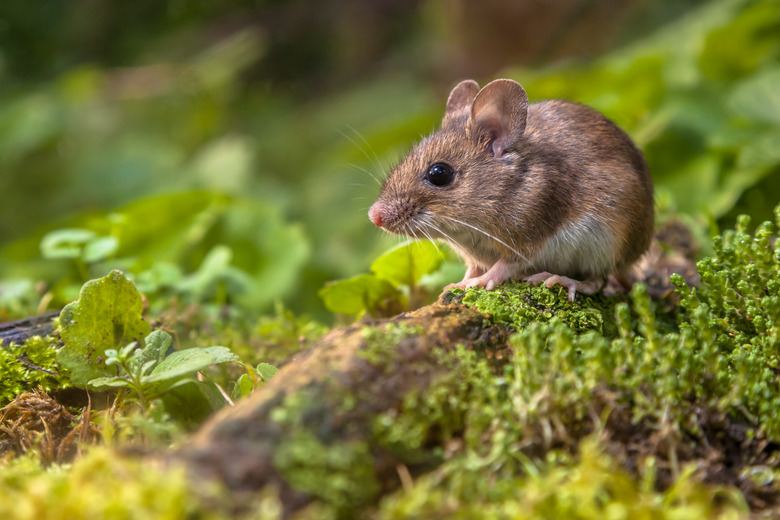Mouse Pregnancy Stages
The mouse gestation period is approximately 21-days following conception according to Rat and Mouse Club. Most mouse pregnancies proceed smoothly with little human intervention. Delivery is generally uneventful, though a mouse disturbed while giving birth may kill her babies. Though mouse pregnancies progress rapidly, they do have distinct stages.
Mouse mating and conception
Mouse mating and conception
Female mice, or does, experience estrus —"heat" —every three to five days, so most does housed with a single male become pregnant within one to five days. Does housed with more than one male at a time rarely bring a pregnancy to term because male mice produce pheromones that cause miscarriage of pregnancies fathered by other mice. Always separate prospective mouse parents by day 16 of pregnancy to avoid any chance of accidental delivery with the buck still in the cage —he will kill the offspring and the female may attack him as well.
Week one of pregnancy
Week one of pregnancy
During the first week of a mouse's pregnancy it's impossible to tell visually that she is pregnant. Weighing her daily on a gram scale may reveal some weight gain. The doe's nipples may become more prominent. Subtle behavior changes might be apparent, particularly if the owner knows her usual habits very well.
Week two of pregnancy
Week two of pregnancy
In week two of a mouse's pregnancy, it may be possible to observe a slight "baby bump" in her abdomen according to Mom.me. It is possible to feel the babies inside the mouse's uterus toward the end of week two, but trying to do so is not advised.
Palpation by anyone other than a veterinarian could kill a baby, potentially causing sepsis and loss of all babies, as well as of the mother. During week two, the pregnant mouse is likely to hoard food and begin to avoid contact with the buck, if they are still housed together.
Week three of pregnancy
Week three of pregnancy
The third week of a mouse's pregnancy is characterized by rapid weight gain. Some mice at this stage look like they've swallowed a golf ball. Others may look no different than they did before they got pregnant. The possibility of a concealed pregnancy makes separation of bucks and does critical, even if a doe doesn't appear pregnant. Mice carrying large litters may seem uncomfortable and restless.
It's okay to hold pregnant mice at this time, but be gentle and allow them to always balance all four paws on your hands or lap. Never squeeze a pregnant doe's belly.
Mouse delivery and labor
Mouse delivery and labor
Most mice give birth easily and uneventfully. The babies squeak loudly when hungry. Do not disturb a mouse for at least two days after she delivers a litter, except to fill the mother's water bottle and food bowl. As long as you continue to hear squeaking, the babies are alive and well.
Complications during delivery are rare and can usually be sorted out by the mouse herself with time, although earlier babies may not survive if complications with later babies keep the mother away from the nest for a prolonged period.
If a mouse who seems to be in labor —frantically nesting, hiding in her nesting box, losing drops of blood —has not produced any babies within 12 hours, take her to a vet. The Fun Mouse suggests finding a quality vet before you even get a pet mouse.
Don't breed your mice
Don't breed your mice
Most pet mice should not be bred and most pet mouse owners should not attempt to breed them. Owners considering breeding should contemplate the risk of losing the mother and all the babies.
Even if pregnancy and delivery go well, the problem of finding homes for the babies remains. Mice produce large litters and it is difficult to find homes that will properly care for their adopted mice for life.
Beware of accidentally introducing a male mouse to females —if you have more than one mouse, make sure a veterinarian or skilled, experienced mouse handler confirms their genders before you allow them to interact.
